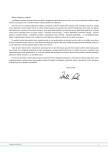CHRONIC PELVIC PAIN (CPPS): ANATOMICAL CONSIDERATIONS, PATHOPHYSIOLOGICAL MECHANISMS, CONFUSABLE DISEASES, THE PHENOMENON OF CHRONICITY. BLADDER PAIN SYNDROME
Authors:
J. J. Wyndale
Authors‘ workplace:
University Antwerp and Antwerp University Hospital
; Professor of Urology
Published in:
Urol List 2010; 8(3): 6-12
Overview
There has been an extensive evolution in the understanding and management of urological pain conditions through international consultations, the creation of working groups in Europe and US. It has become clear that chronic pelvic pain has to be considered as a more general affliction with local, central and generalised consequences. It is likely that it has several different clinical expressions. It appears more often with other diseases. The impact on quality of life is important. Chronic bladder pain syndrome is driven on several symptoms. The diagnosis is made through clinical and technical tests. Cystoscopy and biopsies are needed for differentiation. Many confusable disease have to be ruled out. Treatment consists of general and behavioural measures, drug treatment orally and or intravesically. Surgery can be indicated. A strong support of the patient is needed. The outcome remains uncertain but improvement of the symptoms is often into reach.
Key words:
bladder, pelvic pain, bladder pain syndrome, interstitial cystitis
Sources
1. Abrams P, Cardozo L, Fall M et al. The standardisation of terminology of lower urinary tract function: report from the Standardisation Sub-committee of the International Continence Society. Neurourol Urodyn 2002; 21(2): 167–178.
2. Fall M, Baranowski AP, Elneil S et al. EAU guidelines on chronic pelvic pain. Eur Urol 2010; 57(1): 35–48.
3. Wyndaele JJ, De Wachter S. The basics behind bladder pain: a review of data on lower urinary tract sensations. Int J Urol 2003; 10 Suppl: S49–55.
4. van de Merwe JP, Nordling J, Bouchelouche P et al. Diagnostic Criteria, Classification, and Nomenclature for Painful Bladder Syndrome/Interstitial Cystitis: An ESSIC Proposal. Eur Urol 2008; 53(1): 60–67.
5. Nordling J, Anjum FH, Bade JJ et al. Primary evaluation of patients suspected of having interstitial cystitis (IC). Eur Urol 2004; 45(5): 662–669.
6. Peeker R, Aldenborg F, Dahlström A et al. Increased tyrosine hydroxylase immunoreactivity in bladder tissue from patients with classic and nonulcer interstitial cystitis. J Urol 2000; 163(4): 1112–1115.
7. Russell AL. Glycoaminoglycan (GAG) deficiency in protective barrier as an underlying, primary cause of ulcerative colitis, Crohn's disease interstitial cystitis and possibly Reiter's syndrome. Med Hypotheses 1999; 52(4): 297–301.
8. Lundeberg T, Liedberg H, Nordling L et al. Interstitial cystitis: correlation with nerve fibres, mast cells and histamine. Br J Urol 1993; 71(4): 427–429.
9. Johansson SL, Ogawa K, Fall M. The pathology of IC.in Interstitial cystitis edited by Grannum R Sant, Lippincott-Raven. Philadelphia 1997,Chapter 18 : 143–151.
10. Wyndaele JJ. Evaluation of patients with Painful Bladder Syndrome/interstitial cystitis. ScientificWorldJournal 2005; 5 : 942–949.
11. Wyndaele JJ, Van Dyck J, Toussaint N. Cystoscopy and bladder biopsies in patients with bladder pain syndrome carried out following ESSIC guidelines. Scand J Urol Nephrol 2009; 43(6): 471–475.
12. Karsenty G, AlTaweel W, Hajebrahimi S et al. EAU-EBU Update Series 2006; 4 : 47–61.
13. Hanno PM. Amitriptyline in the treatment of interstitial cystitis. Urol Clin North Am 1994; 21(1): 89–92.
14. Dimitrakov J, Kroenke K, Steers WD et al. Pharmacologic management of painful bladder syndrome/ interstitial cystitis: a systematic review. Arch Intern Med 2007; 167(18): 1922–1929.
15. Parsons CL, Benson G, Childs SJ et al. A quantitatively controlled method to study prospectively interstitial cystitis and demonstrate the efficacy of pentosanpolysulfate. J Urol 1993; 150(3): 845–848.
16. Fritjofsson A, Fall M, Juhlin R et al. Treatment of ulcer and nonulcer interstitial cystitis with sodium pentosanpolysulfate: a multicenter trial. J Urol 1987; 138(3): 508–512.
17. Fleischmann JD, Huntley HN, Shingleton WB et al. Clinical and immunological response to nifedipine for the treatment of interstitial cystitis. J Urol 1991; 146(5): 1235–1239.
18. Simmons JL. Interstitial cystitis: an explanation for the beneficial effect of an antihistamine. J Urol 1961; 85 : 149–155.
19. Seshadri P, Emerson L, Morales A. Cimetidine in the treatment of interstitial cystitis. Urology 1994; 44(4): 614–616.
20. Weiss JM. Pelvic floor myofascial trigger points: manual therapy for interstitial cystitis and the urgency-frequency syndrome. J Urol 2001; 166(6): 2226–2231.
21. Fall M, Carlsson CA, Erlandson BE. Electrical stimulation in interstitial cystitis. J Urol 1980; 123(2): 192–195.
22. Fall M, Lindstrom S. Transcutaneous electrical nerve stimulation in classic and nonulcer interstitial cystitis. Urol Clin North Am 1994; 21(1): 131–139.
23. Barbanti G, Maggi CA, Beneforti P et al. Relief of pain following intravesical capsaicin in patients with hypersensitive disorders of the lower urinary tract. Brit J Urol 1993; 71(6): 686.
24. MaherCF, Carey MP, Dwyer PL et al. Percutaneous sacral nerve root neuromodulation for intractable interstitial cystitis. J Urol 2001; 165(3): 884–886.
25. Payne CK, Whitmore KE, Diokno AC et al. Sacral neuromodulation in patients with interstitial cystitis: a multi-center clinical trial. Neurourol Urodyn 2001; 20 : 554–555.
26. Aihara K, Hirayama A, Tanaka N et al. Hydrodistension under local anesthesia for patients with suspected painful bladder syndrome/interstitial cystitis: safety, diagnostic potential and therapeutic efficacy. Int J Urol 2009; 16(12): 947–952.
27. Rössberger J, Fall M, Jonsson O et al. Long-term results of reconstructive surgery in patients with bladder pain syndrome/interstitial cystitis: subtyping is imperative. Urology 2007; 70(4): 638–642.
28. Webster D. Interstitial cystitis: women at risk for psychiatric misdiagnosis. AWHONNS Clin Issues Perinat Women Health Nurs 1993; 4(2): 236–243.
29. Draucker CB. Coping with a difficult to diagnose illness: The example of interstitial cystitis. Health Care women Int 1991; 12(2): 191–198.
30. Frewen WK. The significance of psychosomatic factor in urge incontinence. Br J Urol 1984; 56(3): 330.
Labels
Paediatric urologist UrologyArticle was published in
Urological Journal

2010 Issue 3
Most read in this issue
- CHRONIC PELVIC PAIN SYNDROME AND CURRENT TREATMENT OPTIONS
- CHANGING MANAGEMENT OF CHRONIC PROSTATITIS/CHRONIC PELVIC PAIN SYNDROME
- OVERACTIVE BLADDER IN CHILDREN AND ADULT PATIENTS
- CHRONIC PELVIC PAIN (CPPS): ANATOMICAL CONSIDERATIONS, PATHOPHYSIOLOGICAL MECHANISMS, CONFUSABLE DISEASES, THE PHENOMENON OF CHRONICITY. BLADDER PAIN SYNDROME
